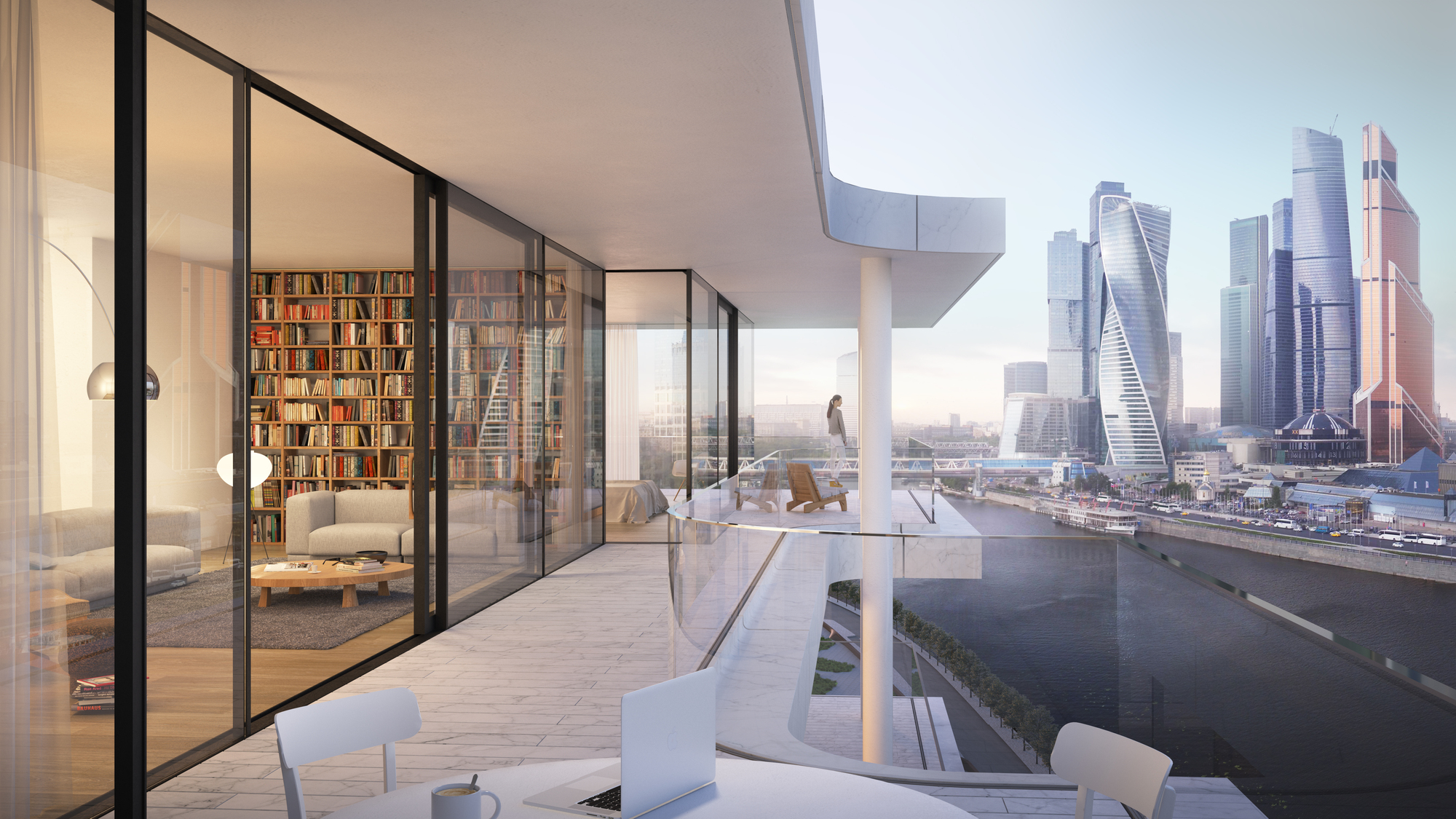Swiss practice Herzog & de Meuron has revealed their renovation plans to the Badaevisky Brewery in the center of Moscow, Russia. The plan includes building two apartment blocks, raised on stilts 35 meters above the ground and bound by a local height limit of 75 meters. The idea of elevating the horizontal skyscraper, as called by the designers, was prompted by the desire to conserve and restore the brewery and the adjacent brick buildings, some of which date back to 1875.
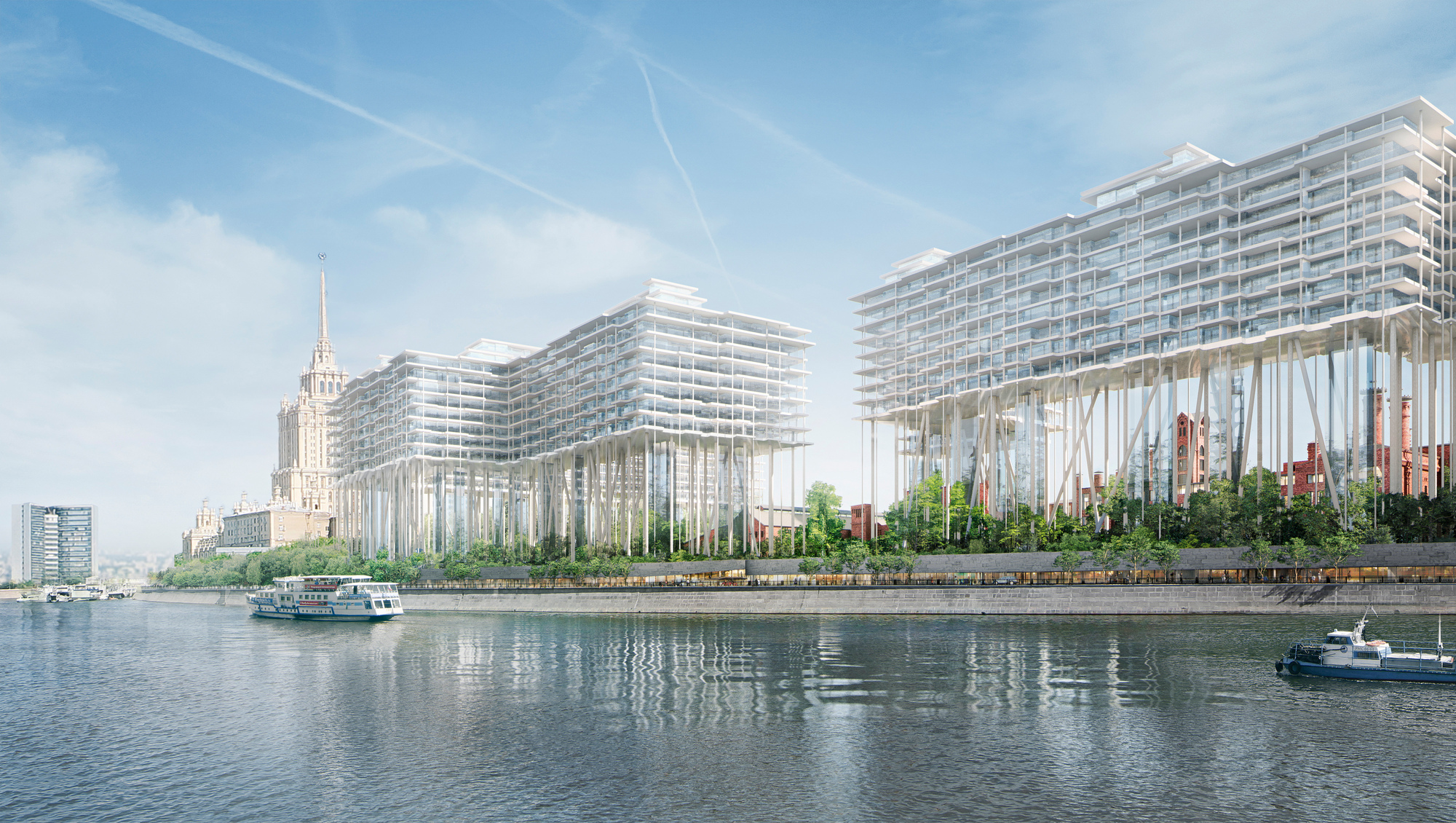
Courtesy of Herzog & de Meuron
The new residential project is not only designed to respect its historical location but also to connect with the multiple modern towers across the Moscow River. It features floor-to-ceiling all-around glass facades to provide residents with panoramic views of the city and the river. Each apartment will have a large private balcony, and the topmost levels will comprise eight ‘sky villas’ which will additionally have access to private roof gardens. Furthermore, a new public park will be introduced below the residential complex to connect the historical site to the river.
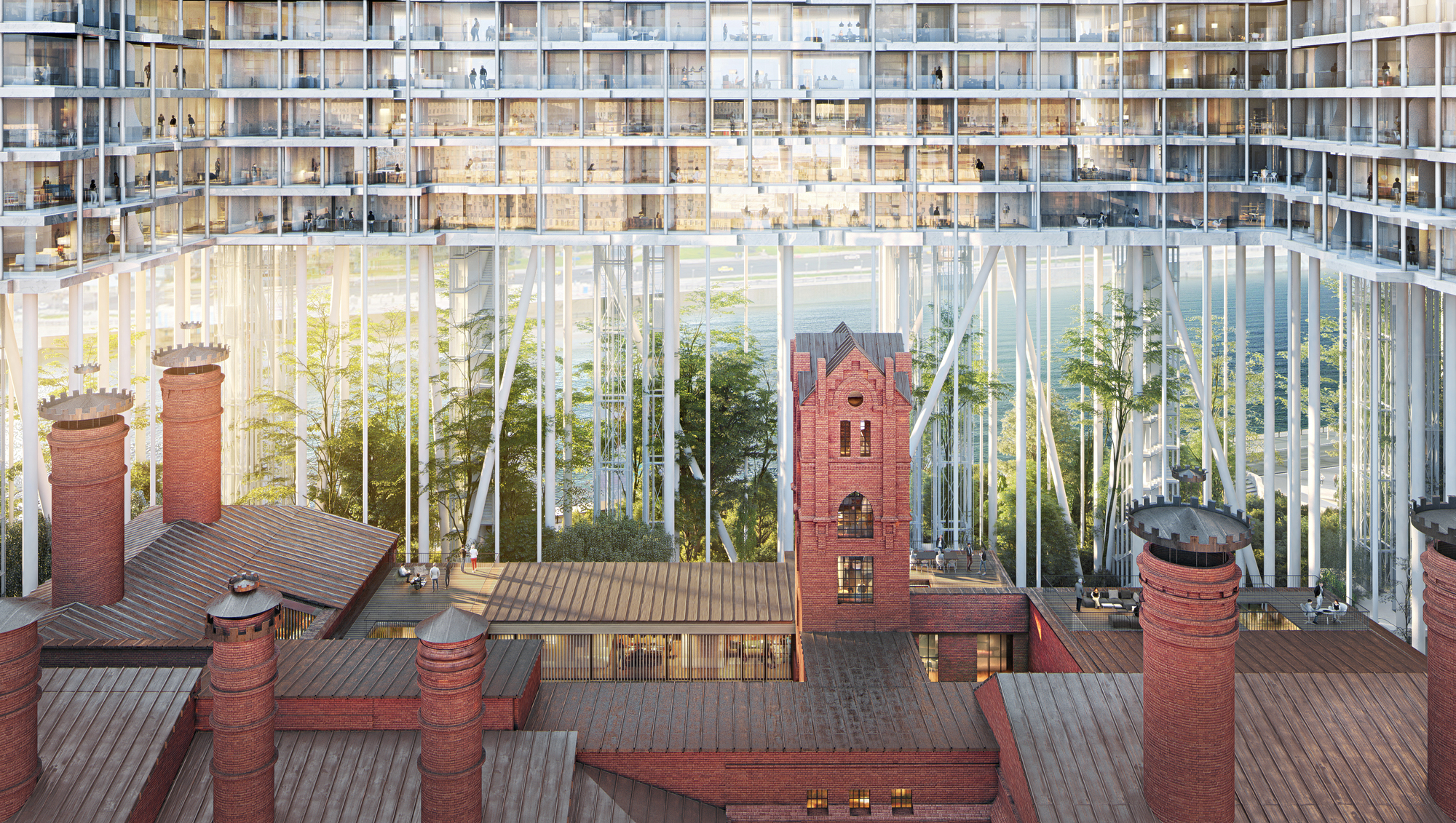
Courtesy of Herzog & de Meuron
“Moscow is a city with a rich and controversial cultural and political heritage, with architectures reflecting avant-garde as well as conservative trends in the course of history,” stated the co-founder of Herzog & de Meuron, Jacques Herzog.
“Our project for the redevelopment of Badaevskiy factory inserts itself in this very history and tradition of Moscow urbanism – it respects and re-uses existing industrial buildings while adding and overlaying them with radically contemporary structures.”
The architects have also pointed out in a statement that their elevated design for the residential complex is remindful of Russian Constructivist and Avant-Garde Architect, El Lissitzky’s “Wolkenbügel”. Wolkenbügel was a conceptual design, depicted by Lissitzky in the early 1920s, for cantilevered horizontal structures of steel and glass, hanging on central massive pylons.
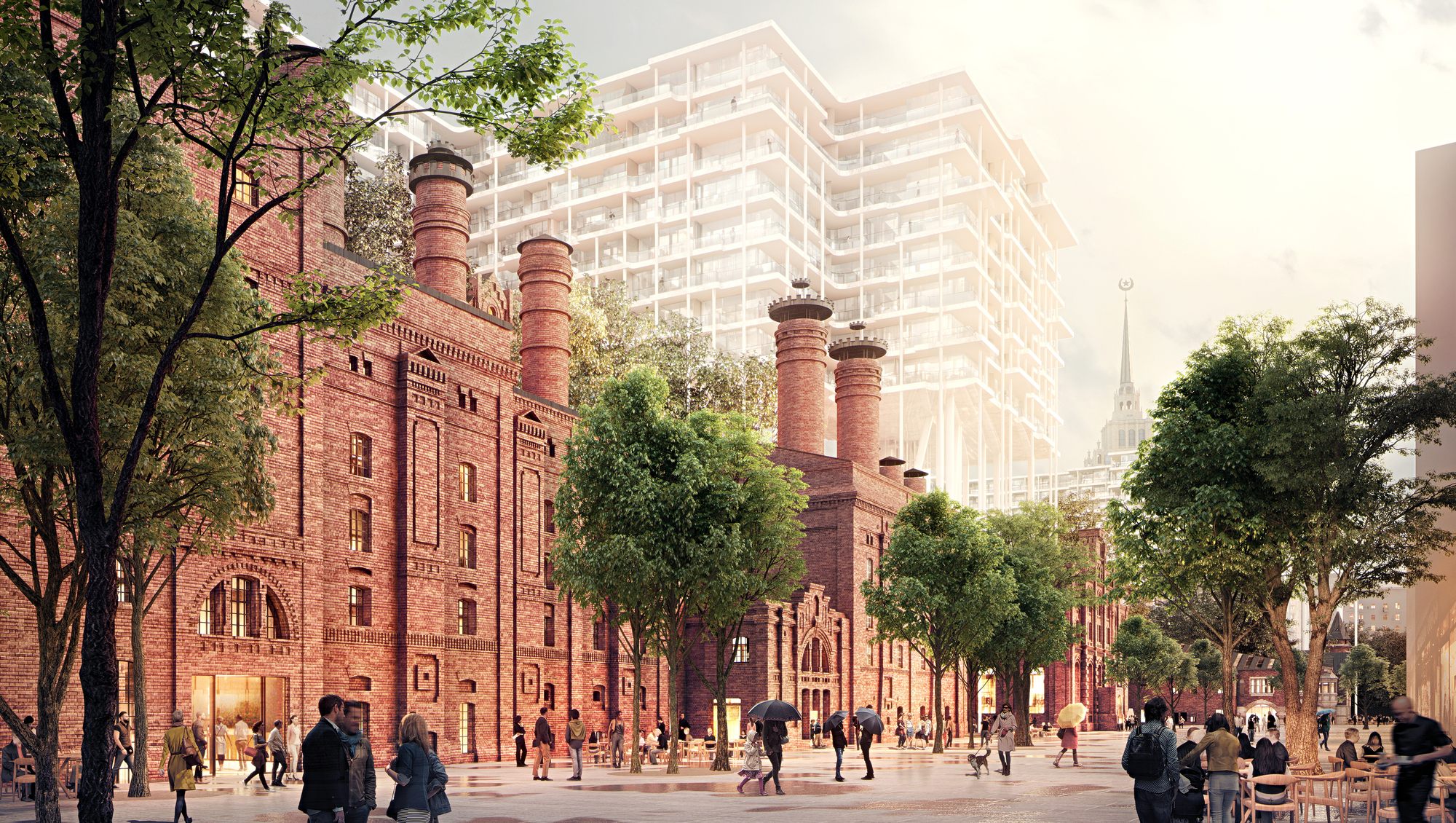
Courtesy of Herzog & de Meuron
“We were hesitant to come up with a building typology, which is so remindful of the Wolkenbügel, one of the most heroic icons of the Russian avant-garde, but here it didn’t look heroic or monumental. The building does not fly; it rather sits on many slender stilts like an elevated lodge in the forest. The stilts connect the building with the ground and the park-like trunks of trees.”
As part of the renovation plan for the historical site, the still-standing old factories are planned to be repurposed. For starters, a couple of Russian Revival arcaded buildings will comprise a food market, fashion store, co-working space with a conference hall, and a gym. All of which are united by a central atrium and covered by a light wooden roof.
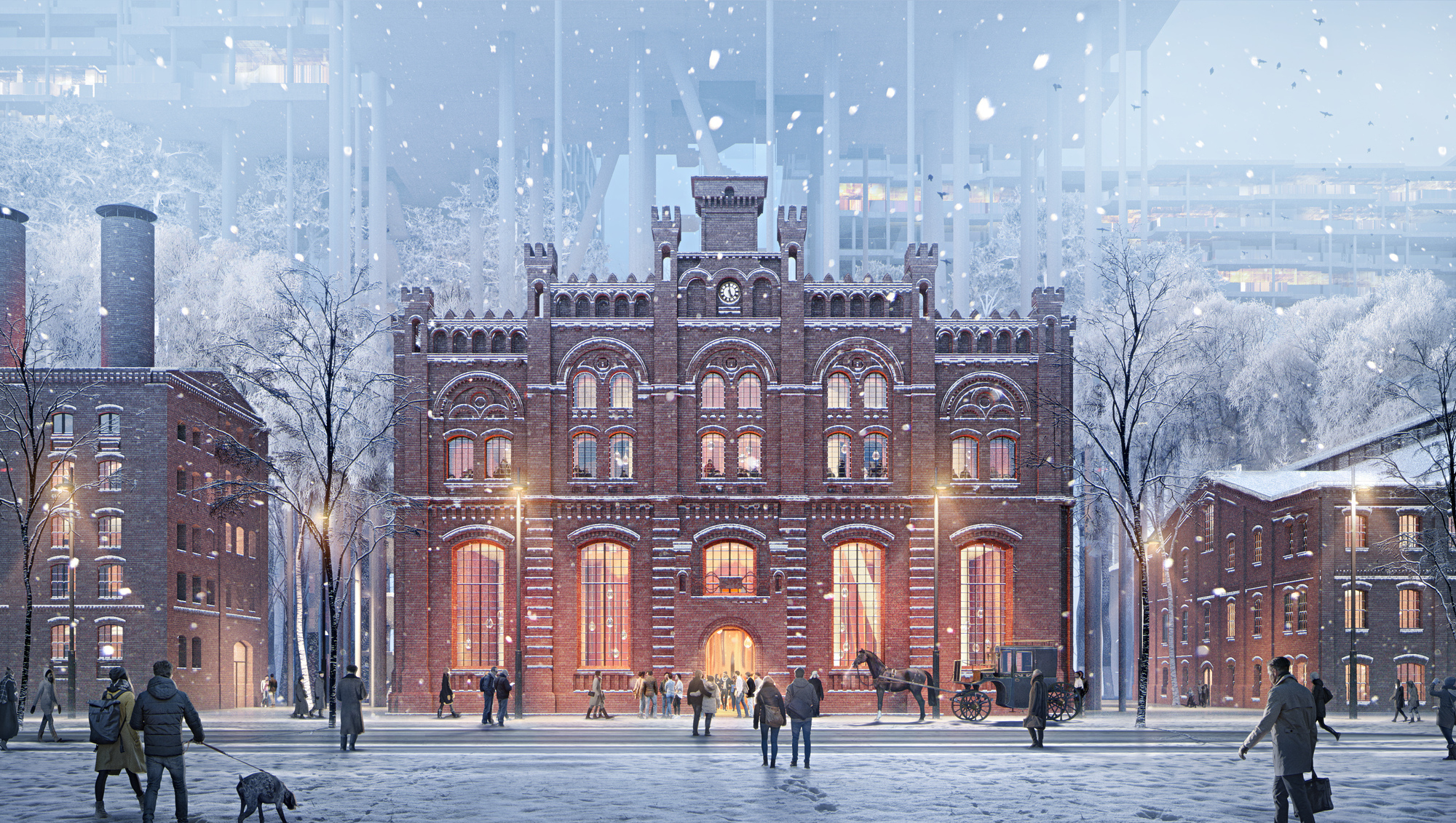
Courtesy of Herzog & de Meuron
Then, there are English-style industrial buildings with silos on one side. These will house a traditional Banya, an arts center, childcare facilities, and apartments with designs that adapt to the various types of spaces that used to exist in the building. Finally, there is the central building to this historic industrial cluster which happens to be missing. Hence, it will be replaced by a new solid brick structure, similar to the lost building’s original form, and it will contain large halls and a brewery.
“We found it extraordinary and especially appealing to use the opportunity to push such a radically different urbanistic approach in a city which has traditionally preferred tabula rasa concepts, in the Soviet as well as the post-Soviet periods,” revealed the designers.
Courtesy of Herzog & de Meuron
Courtesy of Herzog & de Meuron
Courtesy of Herzog & de Meuron
Courtesy of Herzog & de Meuron
Courtesy of Herzog & de Meuron


